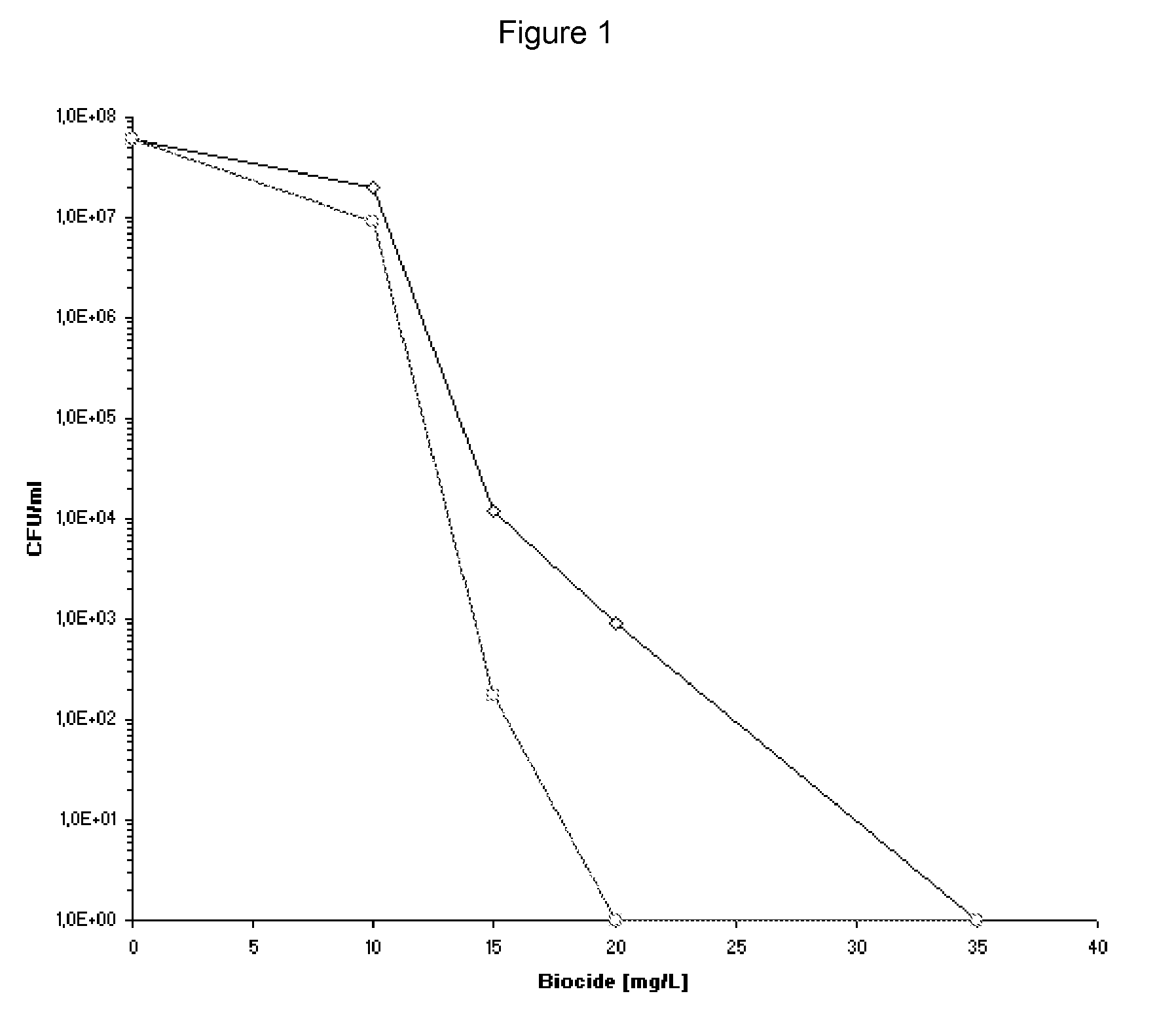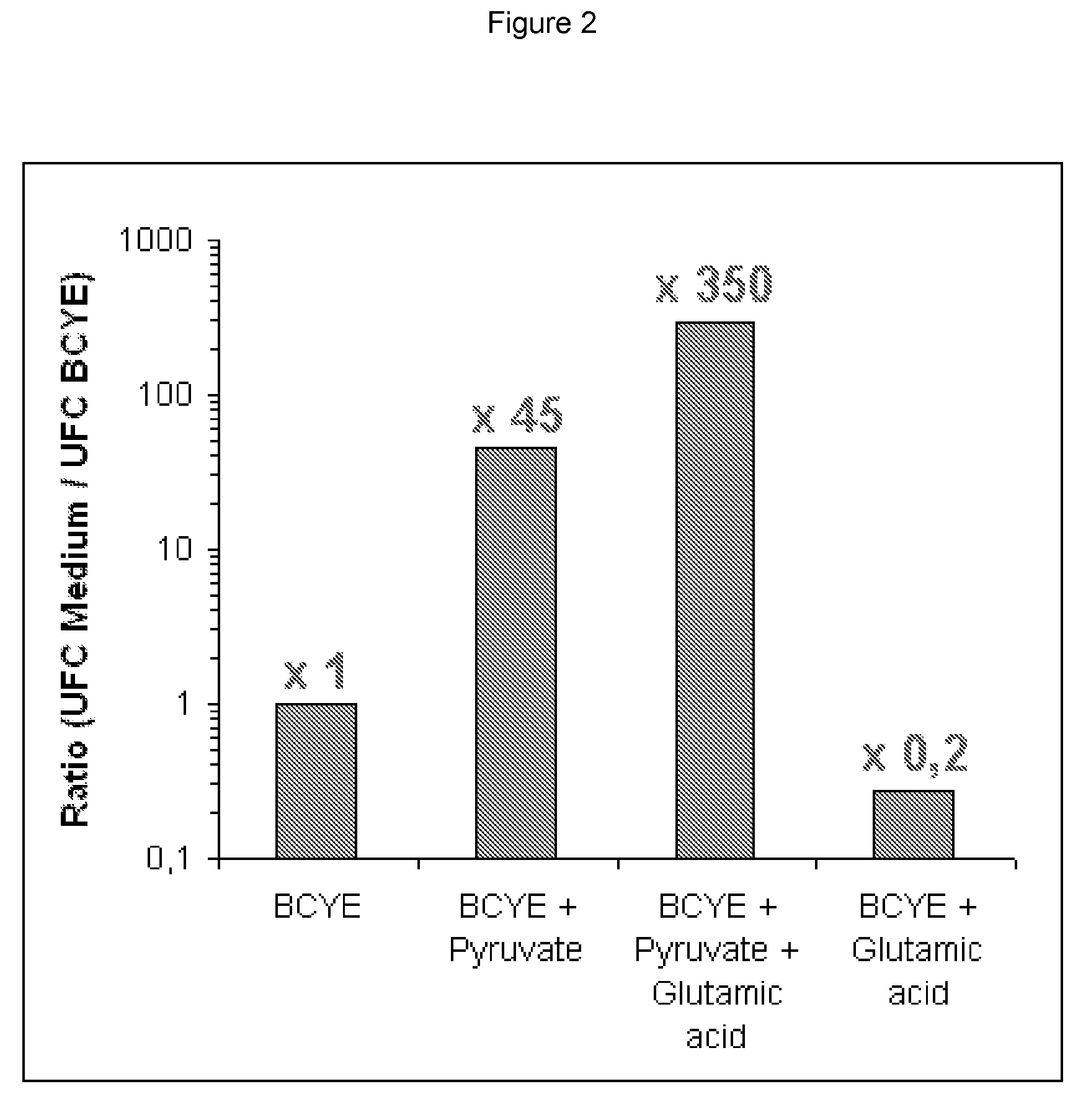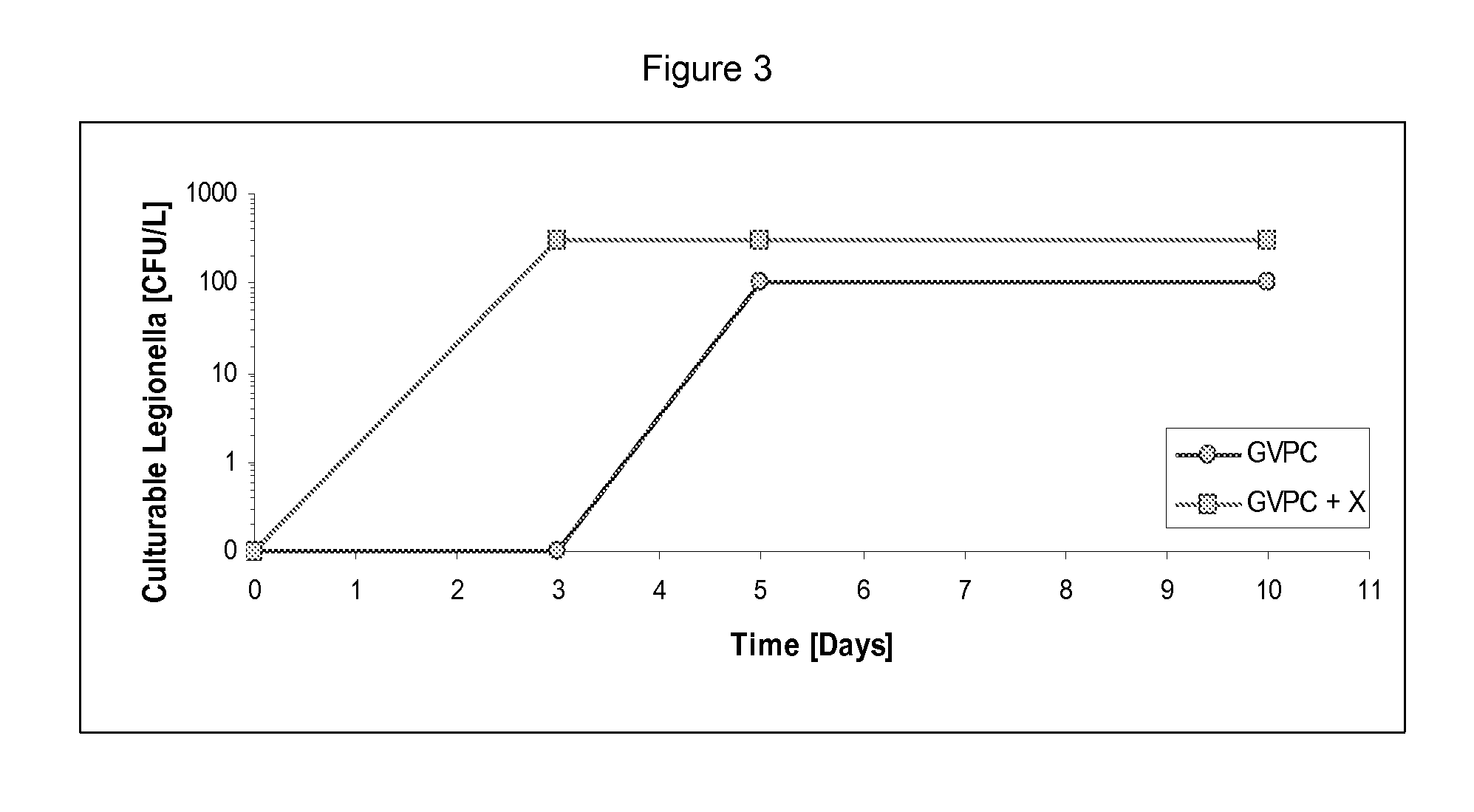Detection and enumeration of microorganisms
- Summary
- Abstract
- Description
- Claims
- Application Information
AI Technical Summary
Benefits of technology
Problems solved by technology
Method used
Image
Examples
example 1
[0066]A suspension of Legionella pneumophila was added to 5 flasks containing 50 ml of sterile phosphate buffer (PBS) at final concentration of 108 bacteria / ml. A biocide solution was added to obtain final concentrations in the range 10 to 30 mg / L. One flask was performed in parallel and served as control without biocide. The biocide used is a THPS (tetrakis(hydroxymethyl)phosphonium sulfate).
[0067]After homogenization, all suspensions were incubated at 37±1° C., in the dark and with agitation for 60 min. Biocide is eliminated by 2 washes in PBS (5,000×g, 10 min) before bacterial counting. Serial dilution is done and 2 aliquot of 100 μl from the same dilution is plated on BCYE agar plate and BCYE supplemented with 0.1% of pyruvate.
[0068]The results are shown in FIG. 1. FIG. 1 shows the enumeration of culturable Legionella Pneumophila after biocide treatment on BCYE medium (squares) and BCYE medium plus 0.1% pyruvate (diamonds). The presence of the biocide is to introduce stressing o...
example 2
[0069]A suspension of Legionella pneumophila was added to 1 flask containing 50 ml of sterile phosphate buffer (PBS) at final concentration of 108 bacteria / ml. A biocide solution was added to obtain final concentration of 15 mg / L. The biocide used is a THPS (tetrakis(hydroxymethyl)phosphonium sulfate).
[0070]After homogenization, suspension was incubated at 37±1° C., in the dark and with agitation for 60 min. Biocide is eliminated by 2 washes in PBS (5,000×g, 10 min) before bacterial counting. Serial dilution is done and 2 aliquot of 100 μl from the same dilution is plated on BCYE agar plate, BCYE supplemented with 0.1% of pyruvate, BCYE supplemented with 0.1% of pyruvate and 1% of glutamic acid and BCYE supplemented with 1% of glutamic acid. The results are shown in FIG. 2. FIG. 2 shows the ratio between number of culturable Legionella obtained on standard medium (BCYE) and number of culturable Legionella obtained on medium supplemented with 2 compounds described in this patent (Pyr...
example 3
[0072]A suspension of Legionella pneumophila was added to 1 flask containing 1 L of sterile phosphate buffer (PBS) at final concentration of 3×102 bacteria / L. After concentration by filtration, 2 aliquot of 100 μl from the same suspension is plated on GVPC agar plate (GVPC), GVPC supplemented with 0.1% of pyruvate and 1% of glutamic acid (GVPC+X). Numbers of colony were counted at 0, 3, 5 and 10 days after incubation at 37° C. The results are shown in FIG. 3. At 3 days of incubation, no colony was visible on GVPC medium when 300 colonies could be already enumerated on GVPC supplemented medium. At 5 and 10 days of incubation, 100 colonies could be enumerated on GVPC where 300 colonies could be enumerated on GVPC supplemented medium. By using supplemented medium, colonies could be detected at least 2 days before that enumerated on standard GVPC.
PUM
 Login to View More
Login to View More Abstract
Description
Claims
Application Information
 Login to View More
Login to View More - R&D
- Intellectual Property
- Life Sciences
- Materials
- Tech Scout
- Unparalleled Data Quality
- Higher Quality Content
- 60% Fewer Hallucinations
Browse by: Latest US Patents, China's latest patents, Technical Efficacy Thesaurus, Application Domain, Technology Topic, Popular Technical Reports.
© 2025 PatSnap. All rights reserved.Legal|Privacy policy|Modern Slavery Act Transparency Statement|Sitemap|About US| Contact US: help@patsnap.com



